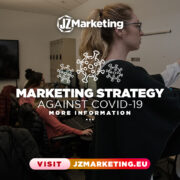Transitioning to the Circular Economy – JZ Marketing
Circular Economy Presentation in Aruba
When you live on an island the size of Aruba, you quickly realize how careful you have to be about how you treat the environment. It’s not a huge island, so you automatically have a sense you need to be careful about the choices you make and the waste you generate from day to day. This is the kind of thinking needed on a global scale to preserve the only home have – Planet Earth. Since it’s our economic activity that most threatens the planet, what we really need is a new way to think about how we do business. That’s what the Circular Economy is all about.
Life isn’t a Straight Line
Traditional economic theory and business models view the economy as linear or what’s called take-make-dispose. We take natural resources, make things out of them, and eventually throw out the things we made when they wear out. The problem with this approach is that it depletes non-renewable resources and generates a lot of waste that then creates its own environmental damage and human health problems. If the linear economy is behind some of our most pressing problems such as global warming and climate change, dwindling water supplies, pollution and continual loss of biodiversity, then it makes sense to adopt a different way of thinking that will slow and maybe even reverse these life-threatening trends. Nature and its ecosystems don’t operate as linear systems. Think about it – there’s no waste in natural, non-human ecosystems. Everything breaks down or decomposes and is recycled.
Life is a Cycle: The Circular Economy

55839795 – illustration of circular economy showing product and material flow on white background with arrows. product life cycle. natural resources are taken to manufacturing. after usage product is recycled or dumped. waste recycling management concept.
By contrast, the circular economy tries to mimic the natural cycle of life by adopting the following three principles as summarized by the Ellen MacArthur Foundation: “(1) Preserve and enhance natural capital by controlling finite stocks and balancing renewable resource flows; (2) Optimize resource yields by circulating products, components, and materials at the highest utility at all times in both technical and biological cycles; (3) Foster system effectiveness by revealing and designing out negative externalities.” Adopting this approach is a huge shift in thinking, and would play out in practical ways such as the following:
For example, a Circular Economy (CE) would eliminate the use of non-renewable resources (such as oil and coal) and would promote the use of renewable resources as long as their flows are balanced, and natural capital is maintained or enhanced. This new paradigm would also recirculate the available materials so that they continue contributing to the economy in a cost-effective and safe way preserving materials energy and value. Thus, activities such as maintenance, reuse and remanufacturing play a very important role in a CE while recycling is considered less cost-effective because of the energy intensity in recycling processes. These activities are possible only if materials, products, services, processes and business models are intelligently designed with recovery in mind. Finally, the effectiveness of the system would be promoted by eliminating the use and emission of toxic substances, avoiding negative externalities such as air, water and land pollution and climate change (source).
Learn More About the Circular Economy
JZ Marketing and Communications is pleased to support this new way of thinking by co-sponsoring an important upcoming seminar all about Circular Economy basics. The seminar is taking place on Wednesday April 11 beginning at 5:00 PM at the University of Aruba (J. Irausquinplein 4 – Aruba). This informative seminar is scheduled to run for five hours. Registration fee is USD 150 or AWG 267. Please join us to learn how we can all participate in the Circular Economy right here on Aruba!










